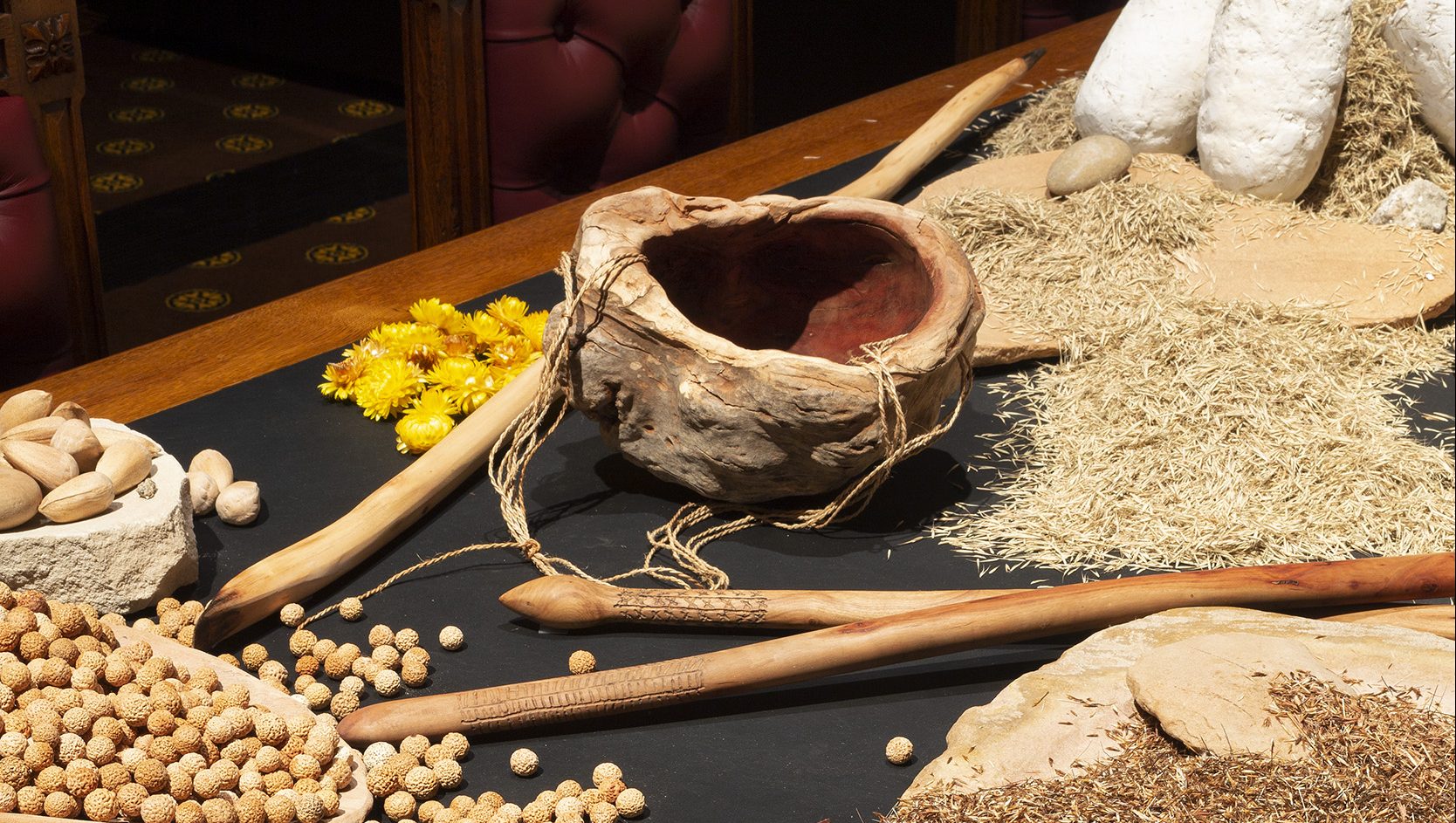


Simon Briggs
nanyirr (yam sticks) 2021
used red ironbark and grey box
Yorta Yorta / Wurundjeri born Bendigo, Victoria 1986; lives and works Huntly, Victoria
Simon Briggs. Hi, how are you? My name is Simon Briggs. My people are the Yorta Yorta and Wiradjuri people in Victoria and also on my Nan's side is Gunditjmara peoples.
My art practice is traditional carving. I love making the tools and weapons that my ancestors utilized every single day of their lives. I guess I got into this practice as a young teenager, turning into an adult, and what made me spark this interest was a couple of Aboriginal fellas that I worked with and hung out with, really were influential in generating this passion I have now. It created this feeling inside me, is like, "Well, how did we make them? What type of trees did we use? What plants did we use? What materials did we use in creating this? What seasons did we actually create these things?" And I used to go out with these fellas into the bush and we'd start trying to create these things because we all had this desire to learn a lot more.
Prior to that, I used to ask my family members, the community members about certain information. But as we probably all know, the colonization has had quite a large impact on Victorian Aboriginal people and the information isn't necessarily forthcoming at times. And I need to remind myself that our communities did and practiced things differently in areas of Victoria as well, so it's about being mindful of those things. And in all honesty, I was probably more passionate about learning these types of practices because I kept hearing statements from the wider community saying, "Well, you're not real Aboriginals. You're not the true Aboriginals," you know, being from Victoria. Like we had no culture, Aboriginal culture left. Which is disappointing, but actually sparked my passion and my ambition to grow and learn a lot quicker and faster than what I probably would've taken to learn this. And I really want to show the community out there, the Australian public, that Aboriginal culture is alive and well in Victoria and that there's so many people out here who are still making and practicing and using these tools and weapons on a daily basis.
How do I source my materials? I generally just go into the bush. What I'll decide is, what tool or weapon am I going to create today or this month? And I'll research it, I'll ask community if I don't already know that information. And then I'll go to those plants and trees that I think were used, and I'll give it a go, I'll practice it, I'll create that piece, that art piece, or tool and weapon. And what I'll learn from that is, was the tree the right material that we used? Was it the right season? Like I've mentioned before. How do you draw the moisture out of the wood? What type and part of the tree do I use? Do I use the tree root? Do I use the tree branch? Do I use the inner bark or the inner wood of the heartwood of the tree? Those are the types of things that I want to learn and explore further.
I make sure when I go out into the bush that I've done it respectfully in terms of cultural practices. I'll contact local community members who are traditional owners to make sure it's okay that I collect particular resources. I'll go back to my homelands and collect resources. I'll also contact the land management guys, if I need to, just to make sure I am safe because there is still a law or policies out there that prevent people from removing these materials from the bush in Victoria. So the best way to get around that is by contacting the land management services, whether it's the government or whether it's the Aboriginal organizations that help manage it.
And in all honesty, I look for the areas that have the same species, there is in abundance, there are the same species, so if I was to cut that particular tree or plant, that I'm not actually going to destroy the ecosystem in that space. That if I was to make a boomerang, then only take one tree root from that tree because I know that the tree will survive. If I need to remove bark, I only remove a small section of it. And it's about acknowledging and respecting how our ancestors did it and do it in a culturally safe way. Then I know that those practices are going to make sure that our wildlife and our plant life still continue to thrive after having those materials removed.
Again, it's important that I continue to practice these traditional tool making and weapon making. I love doing it, it makes me feel so strong and power... Like not powerful as in physically powerful, but I don't know how to describe that feeling, but just powerful within myself, maybe self-esteem, that I was able to create these beautiful pieces, that I get a sense of pride that I've actually been able to achieve what my ancestors did.
I really enjoy failing, you know like going out there and failing 99 times before I feel like I've actually got to the right point of what's correct. That's probably what drives me as well. And I'm a father of four kids at the moment, I'm a foster carer for Aboriginal kids in our community, and I think is the most important thing that we teach our community our culture continually, and I feel that I've got a sense of cultural responsibility to share this information and knowledge that I have, and also learn information that others have to share. Yeah, I just really love it. Thank you.
Close